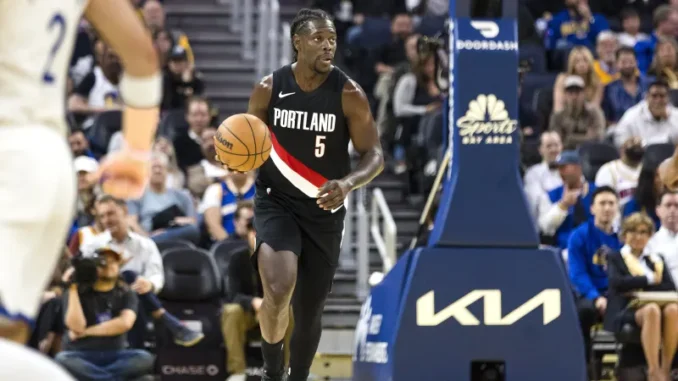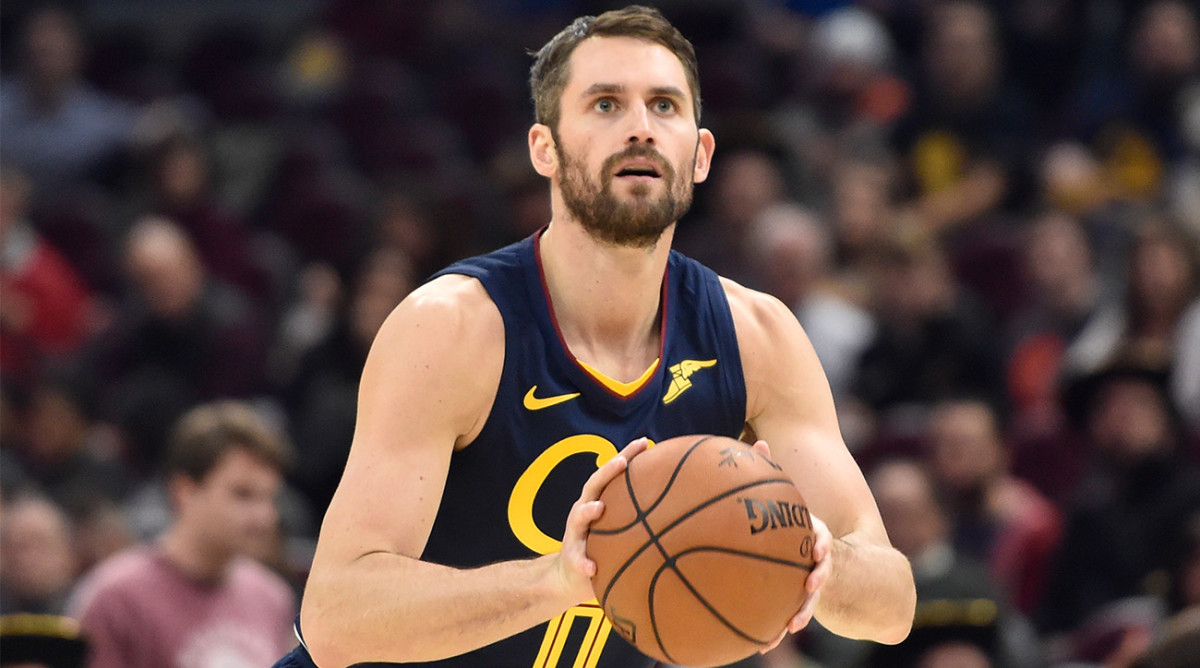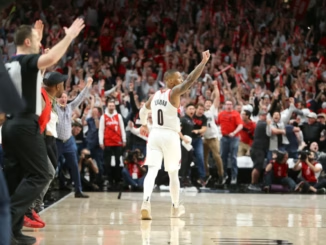
When Jrue Holiday steps onto the floor, the geometry of the game bends—passing windows close faster. Driving lanes collapse. What looks like a routine possession becomes a puzzle — and the other team starts running out of answers. For a young Portland roster still learning how to win through consistency rather than chaos, that shift isn’t just welcome. It’s transformative.
There are roster moves that change box scores, and there are moves that change questions. Jrue Holiday is the latter. His arrival in Portland is not simply the import of a veteran or a leader. It is the insertion of a functional lever that reduces opponent creation, increases contested finishes, and reshapes what Portland asks of its young guards and wings. That is not a rhetorical flourish. It is a structural claim about value and variance, and early game samples suggest the multiplier effect is real.
The Multiplier Defined: What Holiday Actually Does on The Court
Calling Holiday a multiplier is shorthand for a specific chain of effects. He excels in four practical areas better than most guards. First, he pressures pick-and-roll ball-handlers in a way that forces earlier decisions and more contested pull-ups. Second, he takes help angles that funnel drives away from the rim, converting what would be high-value attempts into lower-value finishes. Third, his hand activity and spatial awareness create deflections that lead to fast-break possessions. Fourth, his communication and on-court posture improve the positioning of nearby teammates, which reduces rotation mistakes.
Those micro-actions add up. Historically, Holiday tracks as a +1.3 career Defensive Box Plus/Minus (DBPM), a figure that places him in the 92nd percentile among all guards over the past decade. In the 2024–25 season, he averaged 1.7 steals per game and combined for approximately 2.4 steals + deflections per 36 minutes. Those numbers map to team outcomes in predictable ways: when Holiday is on the floor, opponents suffer fewer at-rim attempts and generate more contested jumpers—the kind of possessions that reduce late-game variance. In Portland’s early sample, the film-level behavior has shown up in opponent play selection: per-36 at-rim attempts drop and assist rates inch lower when Holiday logs 20+ minutes. The net result is less variance. The young guards no longer have to overcome the same level of free creation every night.
Film Room: Three Plays That Show the Multiplier in Motion
You can attend to the numbers, but the multiplier becomes obvious on tape. Three representative possessions tell the story.
Play One. Early in a recent road game vs. the Denver Nuggets on Oct. 31, 2025, Portland faced a high screen designed to free a primary creator to the rim. Holiday’s first step took away the drive lane and nudged the ball-handler toward a contested step-back. The shot was a low-percentage pull-up that clanked off the rim. The defensive sequence did not end with a steal but with a reset and a Portland offensive possession. That substitution of a probable rim attempt for a contested jumper is the core of Holiday’s game.
Play Two. Late in the second quarter of another matchup vs. the Utah Jazz on Oct. 29, Holiday rotated from the weak side with perfect timing, taking away a look that would have been a layup. The help defender’s angle followed Holiday’s rotation, and the opponent was forced into a cross-court kick that missed. That rebound led to a Portland transition score. The two-part effect is immediate: opponent expected points drop, and Portland’s counter-attack raises its own expected points. Tiny margins here flip win probability.
Play Three. Against the Los Angeles Clippers on Oct. 26, a team that thrives on quick ball reversal, Holiday’s active hands produced a mid-clock deflection that turned into a steal. The turnover led to a four-point swing in less than ten seconds because Portland finished the break. Those are the possessions that look trivial in isolation but accumulate into a measurable transition edge over a season.
The film reveals the causal mechanism. Holiday doesn’t simply get steals. He changes how opponents construct possessions. That change is what multiplies Portland’s defense into a broader team advantage.
The Measurable Ripple: What the Data Is Starting to Show
Those small sequences illustrate what the data confirms: Holiday’s disruptions scale upward. Early-season splits and on-off samples reveal patterns that align with the film. In short windows where Holiday’s minutes are stable, opponents are taking fewer at-rim attempts and committing more contested perimeter tries. Opponent assist rates and free-throw attempts trend downward in those minutes, suggesting fewer clean possessions and less late-clock time spent on high-leverage creation.
Those shifts don’t need to be dramatic to make a difference. A suppression of two at-rim attempts per 100 possessions and a one to two percent drop in opponent assist percentage can be the difference between losing a handful of close games and winning them. Greater defensive steadiness reduces variance and turns swing games into slightly more winnable outings. The math is simple: in a compressed playoff race, marginal gains in defensive efficiency compound into wins more reliably than comparable gains in volatile offense. Portland’s early sample suggests Holiday is delivering exactly that kind of marginal defensive value.
Roster and Development Implications: What Changes for Henderson, Sharpe, and the Front Office
The multiplier alters assignment and expectation. For Scoot Henderson, it means fewer nights where he must manufacture creation against scrambled coverage. That doesn’t remove the developmental need for craft—it reduces the number of high-risk plays he must attempt to achieve the same scoreboard outcome. Cleaner pick-and-roll reads show up in higher finishing percentages and fewer turnovers. For Shaedon Sharpe, Holiday’s help rotations produce cleaner kick-out looks and more catch-and-shoot repeats. Sharpe’s growth depends on consistent, repeatable shots as much as raw playmaking. Holiday’s presence increases the frequency of those clean opportunities.
In construction, the multiplier gives the front office optionality. A trusted perimeter defender like Holiday lets Portland prioritize upside on the wings rather than adding only defense. That changes trade posture and roster economics. Instead of paying a premium for another veteran stopper, the team can invest in shooters and interior spacers, knowing Holiday will lower the chance of catastrophic possessions. It’s a tactical shift in asset allocation: buy minutes for defensive structure and allocate salary flexibility to upside elsewhere. That’s how franchises convert a single veteran’s presence into a broader competitive strategy.
Limits and the Practical Test
The multiplier is powerful but not invulnerable. Holiday is 35 years old, and his minutes must be managed. Durability is the obvious constraint. The multiplier logic depends on consistent availability. Miss enough games, and the identity advantage erodes. Opponents can also adjust. If Holiday forces fewer drives, teams can focus on attacking offensive rebounding or exploiting post matchups. The multiplier needs complementary pieces: a reliable rebounder, disciplined wings, and coaching clarity.
The practical test is measurable and concrete. Track these three gauges over the next six to eight games:
- Opponent at-rim attempts with Holiday on the floor versus off.
- Opponent assist and turnover rates in Holiday minutes.
- Portland’s transition points per turnover forced.
Sustained positive movement in those metrics will confirm the multiplier’s durability. If those measures regress when Holiday rests, the league will see the limit of the effect.
Conclusion
Jrue Holiday won’t rewrite a roster in a week. But he will change what it feels like to compete — what kinds of possessions decide games, and how often Portland can control them. His value isn’t loud. It’s the slow accumulation of structural advantages that reduces chaos and rewards patience. For a young team, the difference between a lost possession and a stabilized one can be the difference between growth and regression.
If the Blazers begin losing closer to the end instead of collapsing, that’s the signal the multiplier is working. Holiday’s impact won’t always appear in the box score — it’ll appear in the questions opponents no longer get to ask. He doesn’t just defend possessions. He multiplies the meaning of every stop.




Be the first to comment